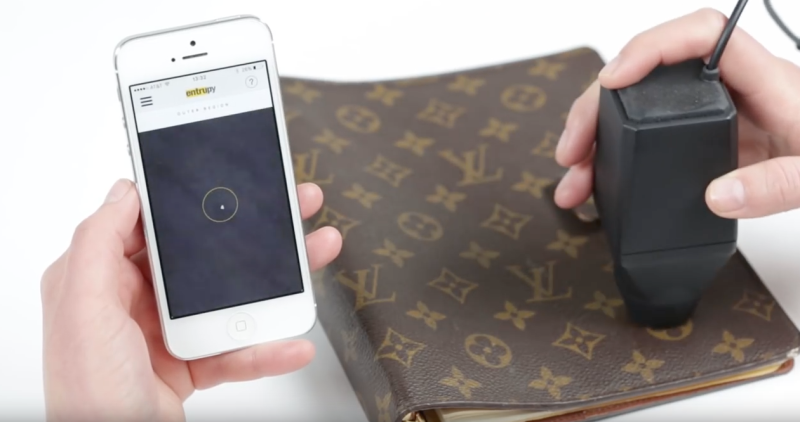Researchers use machine learning to spot counterfeit consumer products

A team of researchers has developed a new mechanism that uses machine-learning algorithms to distinguish between genuine and counterfeit versions of the same product.
The work, led by New York University Professor Lakshminarayanan Subramanian, will be presented on Mon., Aug. 14 at the annual KDD Conference on Knowledge Discovery and Data Mining in Halifax, Nova Scotia.
"The underlying principle of our system stems from the idea that microscopic characteristics in a genuine product or a class of products—corresponding to the same larger product line—exhibit inherent similarities that can be used to distinguish these products from their corresponding counterfeit versions," explains Subramanian, a professor at NYU's Courant Institute of Mathematical Sciences.
The system described in the presentation is commercialized by Entrupy Inc., an NYU startup founded by Ashlesh Sharma, a doctoral graduate from the Courant Institute, Vidyuth Srinivasan, and Subramanian.
Counterfeit goods represent a massive worldwide problem with nearly every high-valued physical object or product directly affected by this issue, the researchers note. Some reports indicate counterfeit trafficking represents 7 percent of the world's trade today.
While other counterfeit-detection methods exist, these are invasive and run the risk of damaging the products under examination.
The Entrupy method, by contrast, provides a non-intrusive solution to easily distinguish authentic versions of the product produced by the original manufacturer and fake versions of the product produced by counterfeiters.
It does so by deploying a dataset of three million images across various objects and materials such as fabrics, leather, pills, electronics, toys and shoes.
"The classification accuracy is more than 98 percent, and we show how our system works with a cellphone to verify the authenticity of everyday objects," notes Subramanian.
To date, Entrupy, which recently received $2.6 million in funding from a team of investors, has authenticated $14 million worth of goods.
More information: Ashlesh Sharma et al. The Fake vs Real Goods Problem, Proceedings of the 23rd ACM SIGKDD International Conference on Knowledge Discovery and Data Mining - KDD '17 (2017). DOI: 10.1145/3097983.3098186
Provided by New York University



















